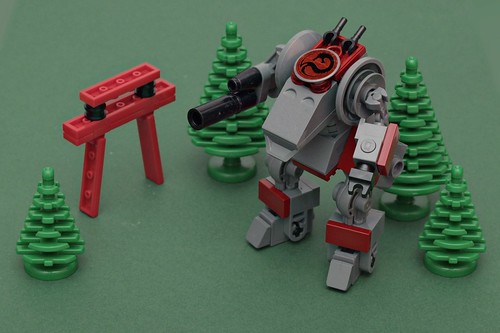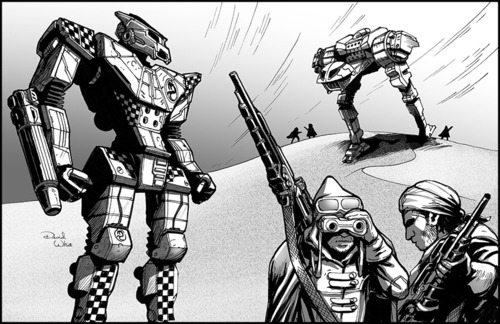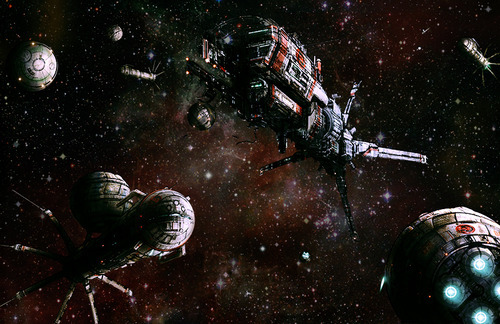For almost a millennium, the symbol of the Dragon has struck fear into the rest of the Inner Sphere. The fearless dedication of its warriors, the devotion of its people, and the awesome ambitions of its Coordinator: House Kurita has been more reviled than any other power. Yet a new leader has arisen in the last decades, bringing about a host of reforms and reigning in the realm’s most rapacious desires. Such rebirth comes at a price, as various shadowy influencers fix their eyes on reigniting the Dragon’s glorious past. Only time will tell which path the Dragon will follow….
Handbook: House Kurita cover the pivotal history, politics and cultures of the Inner Sphere’s most feared Great Houses. Not just a sourcebook, Handbook: House Kurita covers rules for both BattleTech and A Time of War game play, including such areas as personal equipment, support vehicles, creatures and more.
[Релиз]Handbook: House Kurita
Модераторы: Siberian-troll, Hobbit
Сообщений: 40
• Страница 1 из 2 • 1, 2
[Релиз]Handbook: House Kurita
Даешь перевыполнить план по выпуску вехикулярных огнеметов в отчетном 3145 году!
-

DeJaVu - Администрация btbooks.ru
- Сообщения: 3472
- Зарегистрирован: 17 июл 2009, 17:41
- Благодарил (а): 154 раз.
- Поблагодарили: 1237 раз.
Re: [Анонсы]Handbook: House Kurita
Бен нас, право, балует... Книга переносится на 2013 год

“Devotion to the Success of the Combine Through Proper Work”
(Dictum Honorium VII, 215-216)
Devotion to duty, perfected through greater self-discipline, leads to an improved state of personal freedom and sense of joy focused on fulfillment in one’s work.
[Commentary: Business is war on the field of numbers. Financial ruin from poor decisions and improper decorum is as deadly as badly considered tactics and unconsidered strategies. In the great machine, one faulty gear can create a catastrophe; one poorly maintained part could destroy a company. It is the duty of the worker to give all he is to the success of his endeavor. For the smallest part plays the largest role in the success or failure of the greater purpose.]

So I found myself in possession of a few minutes today and decided to post an update (of sorts) on my progress with Handbook: House Kurita. Suffice to say, the first draft is not yet complete due to a myriad of factors. But with only two sections remaining to be completed (later history and a mini-atlas), it’s nearing completion. Unfortunately for those waiting, this means the book will not see publication until early 2013.
The book has been a true exploration of the BattleTech universe’s most misunderstood and maligned factions. Grossly sketched as the “evil empire” early on in the game’s creation, the Draconis Combine has turned into one of the most dynamic and culturally rich realms in the current setting. This particular stellar empire survives on the sheer force of will of its ruling House, the Kurita clan. As the family went, so did the Combine.
Anyway, one of the earliest sections I’d completed was the chapter describing the Pillar of Jade – the economic structure of the realm. One of the key pieces within this chapter are the corporate sketches of the Combine’s industrial might. For the Combine, industry is divided along two lines – those that support the military, and everything else. The Draconis Combine’s reliance on the military is a major cornerstone of its existence and key to its continued survival.
Within the military industrial sector, one corporation has dominated since the early years of the realm’s formation: Luthien Armor Works, also known as LAW. As a treat, I present the (to-edit) draft of LAW’s entry in the upcoming Handbook: House Kurita…
Luthien Armor Works
Headquarters: Tokyo Island (Luthien)
CEO: Shogun Hoek Botterfield
Main Products (Dieron; LAW—Dieron): Grand Dragon BattleMech, BattleMech refits
Main Products (Enif; LAW—Enif): BattleMech and combat vehicle armor plating
Main Products (Luthien; BBP Industries): Bara no Ryu, Excalibur, Intruder, Nekohono’o, Okinawa, and Triumph class DropShips, BattleSat System Defense Stations
Main Products (Luthien; Guthry Island OmniMech Production Facility): Avatar, Black Hawk-KU, Blackjack, Firestarter, Owens, Raptor, Strider, and Sunder OmniMechs
Main Products (Luthien; Primary Factory): Charger, Daikyu, Daimyo, Grand Dragon, Jenner, Komodo, Mauler, O-Bakemono, and Quickdraw BattleMechs; Kage, Kanazuchi, and Raiden battle armor
Main Products (Saffel; LAW—Saffel): Grand Dragon BattleMech
Main Products (Yori; LAW—Yori): Grand Dragon BattleMech
Main Products (Al Na’ir; Yori Mech Works) Atlas, Catapult, and Hatamoto-series BattleMechs
Main Products (Al Na’ir; Scarborough Manufacturers): Pegasus, Saladin, Saracen and Scimitar hovertanks, Maxim, heavy and standard hover APCs
Main Products (Oshika; Nimakachi Fusion Products Ltd.): Bishamon, Spider and Venom BattleMechs
Main Products (Izunami; Izumi JumpShip Yard): Chimeisho class JumpShip
Main Products (Altair; Kurita Combine Munitions Corp): Riever Aerospace Fighter
Main Products (Kessel; Diverse Optics, Inc.): laser weaponry
Main Products (Qandahar; Dow-Nexus Fusion Products): various fusion engines
Main Products (Galtor; Galtor Naval Yards): NeptuneSubmarine, civilian cargo submarines, various watercraft
Main Products (Proserpina; Guided Technologies): Missiles, missile launchers and missile guidance systems
Main Products (Jeanette; Jeanette Naval Yard): Triton class missile submarine
Main Products (Hanover; Saxe-Heidelberg Heavy Industries): Shuriken Spotter Plane, Graf-Tengu Air Transport, various civilian aircraft
Main Products (Benjamin; Whitworth Specialty Manufacturing): BattleMech repair and modification services
Profile: The biggest corporate conglomerate within the Combine and considered the Dragon’s iconic BattleMech manufacturer, LAW is a foundational lynchpin of the Kuritan empire. LAW’s primary loyalty has always been to the Kuritan throne, structuring its hierarchy and business plans to the whims of the Coordinators. Nothing during its centuries of existence has truly threatened the massive corporation. It is the DCMS’s largest weapons manufacturer, supplier, and the sole economic engine on several Combine worlds.
Over the centuries, LAW has absorbed or acquired several of its former competitors. Typically, LAW’s board of directors leaves the assimilated company’s internal structure intact; often, many of its new employees are not even aware of the transition of power. LAW senior executives continually challenge several of its subsidiaries to compete for contracts and in the corporate arena; they believe such activity only strengthens the corporation as a whole.
When Sanethia Kurita authorized and designed the transformation of Luthien, she allotted several million square kilometers for LAW to build upon. The corporate designers selected two major island formations off the coast of the future site of Imperial City. Major reconstruction transformed the shallow bay, diverting millions of metric tons of water back into the Obsidian Sea. The result was two massive plateaus that towered over the landscape: Tokyo and Guthry Islands. LAW engineers then sculpted each into an organically centered arcology, containing worker housing, manufacturing facilities, production areas, and smelting pits. Personal transportation rails interconnected the two islands and nearby Imperial City. In 3052, LAW built their massive OmniMech complex in and around the bases of both towers, covering much of the former bay floor. Despite the sheer amount of machinery and people in such a small area, the heavily populated LAW City maintains a harmonic feel that pleases the eye, if not the nose. Pollution is a perennial problem, one that LAW engineers are still working to resolve.
The second-largest LAW facility is its administrative division, located in LAW City on Pesht. It employs nearly fifty million workers to handle the monolithic company’s internal bureaucracy.

“Devotion to the Success of the Combine Through Proper Work”
(Dictum Honorium VII, 215-216)
Devotion to duty, perfected through greater self-discipline, leads to an improved state of personal freedom and sense of joy focused on fulfillment in one’s work.
[Commentary: Business is war on the field of numbers. Financial ruin from poor decisions and improper decorum is as deadly as badly considered tactics and unconsidered strategies. In the great machine, one faulty gear can create a catastrophe; one poorly maintained part could destroy a company. It is the duty of the worker to give all he is to the success of his endeavor. For the smallest part plays the largest role in the success or failure of the greater purpose.]

So I found myself in possession of a few minutes today and decided to post an update (of sorts) on my progress with Handbook: House Kurita. Suffice to say, the first draft is not yet complete due to a myriad of factors. But with only two sections remaining to be completed (later history and a mini-atlas), it’s nearing completion. Unfortunately for those waiting, this means the book will not see publication until early 2013.
The book has been a true exploration of the BattleTech universe’s most misunderstood and maligned factions. Grossly sketched as the “evil empire” early on in the game’s creation, the Draconis Combine has turned into one of the most dynamic and culturally rich realms in the current setting. This particular stellar empire survives on the sheer force of will of its ruling House, the Kurita clan. As the family went, so did the Combine.
Anyway, one of the earliest sections I’d completed was the chapter describing the Pillar of Jade – the economic structure of the realm. One of the key pieces within this chapter are the corporate sketches of the Combine’s industrial might. For the Combine, industry is divided along two lines – those that support the military, and everything else. The Draconis Combine’s reliance on the military is a major cornerstone of its existence and key to its continued survival.
Within the military industrial sector, one corporation has dominated since the early years of the realm’s formation: Luthien Armor Works, also known as LAW. As a treat, I present the (to-edit) draft of LAW’s entry in the upcoming Handbook: House Kurita…
Luthien Armor Works
Headquarters: Tokyo Island (Luthien)
CEO: Shogun Hoek Botterfield
Main Products (Dieron; LAW—Dieron): Grand Dragon BattleMech, BattleMech refits
Main Products (Enif; LAW—Enif): BattleMech and combat vehicle armor plating
Main Products (Luthien; BBP Industries): Bara no Ryu, Excalibur, Intruder, Nekohono’o, Okinawa, and Triumph class DropShips, BattleSat System Defense Stations
Main Products (Luthien; Guthry Island OmniMech Production Facility): Avatar, Black Hawk-KU, Blackjack, Firestarter, Owens, Raptor, Strider, and Sunder OmniMechs
Main Products (Luthien; Primary Factory): Charger, Daikyu, Daimyo, Grand Dragon, Jenner, Komodo, Mauler, O-Bakemono, and Quickdraw BattleMechs; Kage, Kanazuchi, and Raiden battle armor
Main Products (Saffel; LAW—Saffel): Grand Dragon BattleMech
Main Products (Yori; LAW—Yori): Grand Dragon BattleMech
Main Products (Al Na’ir; Yori Mech Works) Atlas, Catapult, and Hatamoto-series BattleMechs
Main Products (Al Na’ir; Scarborough Manufacturers): Pegasus, Saladin, Saracen and Scimitar hovertanks, Maxim, heavy and standard hover APCs
Main Products (Oshika; Nimakachi Fusion Products Ltd.): Bishamon, Spider and Venom BattleMechs
Main Products (Izunami; Izumi JumpShip Yard): Chimeisho class JumpShip
Main Products (Altair; Kurita Combine Munitions Corp): Riever Aerospace Fighter
Main Products (Kessel; Diverse Optics, Inc.): laser weaponry
Main Products (Qandahar; Dow-Nexus Fusion Products): various fusion engines
Main Products (Galtor; Galtor Naval Yards): NeptuneSubmarine, civilian cargo submarines, various watercraft
Main Products (Proserpina; Guided Technologies): Missiles, missile launchers and missile guidance systems
Main Products (Jeanette; Jeanette Naval Yard): Triton class missile submarine
Main Products (Hanover; Saxe-Heidelberg Heavy Industries): Shuriken Spotter Plane, Graf-Tengu Air Transport, various civilian aircraft
Main Products (Benjamin; Whitworth Specialty Manufacturing): BattleMech repair and modification services
Profile: The biggest corporate conglomerate within the Combine and considered the Dragon’s iconic BattleMech manufacturer, LAW is a foundational lynchpin of the Kuritan empire. LAW’s primary loyalty has always been to the Kuritan throne, structuring its hierarchy and business plans to the whims of the Coordinators. Nothing during its centuries of existence has truly threatened the massive corporation. It is the DCMS’s largest weapons manufacturer, supplier, and the sole economic engine on several Combine worlds.
Over the centuries, LAW has absorbed or acquired several of its former competitors. Typically, LAW’s board of directors leaves the assimilated company’s internal structure intact; often, many of its new employees are not even aware of the transition of power. LAW senior executives continually challenge several of its subsidiaries to compete for contracts and in the corporate arena; they believe such activity only strengthens the corporation as a whole.
When Sanethia Kurita authorized and designed the transformation of Luthien, she allotted several million square kilometers for LAW to build upon. The corporate designers selected two major island formations off the coast of the future site of Imperial City. Major reconstruction transformed the shallow bay, diverting millions of metric tons of water back into the Obsidian Sea. The result was two massive plateaus that towered over the landscape: Tokyo and Guthry Islands. LAW engineers then sculpted each into an organically centered arcology, containing worker housing, manufacturing facilities, production areas, and smelting pits. Personal transportation rails interconnected the two islands and nearby Imperial City. In 3052, LAW built their massive OmniMech complex in and around the bases of both towers, covering much of the former bay floor. Despite the sheer amount of machinery and people in such a small area, the heavily populated LAW City maintains a harmonic feel that pleases the eye, if not the nose. Pollution is a perennial problem, one that LAW engineers are still working to resolve.
The second-largest LAW facility is its administrative division, located in LAW City on Pesht. It employs nearly fifty million workers to handle the monolithic company’s internal bureaucracy.
Даешь перевыполнить план по выпуску вехикулярных огнеметов в отчетном 3145 году!
-

DeJaVu - Администрация btbooks.ru
- Сообщения: 3472
- Зарегистрирован: 17 июл 2009, 17:41
- Благодарил (а): 154 раз.
- Поблагодарили: 1237 раз.
Re: [Анонсы]Handbook: House Kurita

The highest ideals to which the subjects of Lord Kurita can aspire are Purity and Harmony.
By Purity is meant freedom from all that might come between the citizen and their duty to their Lord and government.
[Commentary: Purity does not mean avoidance of bodily functions such as sex. Rather, it refers to using those functions to increase one’s contribution to the Dragon. To combine with one of the opposite sex to produce a child is therefore praiseworthy if the new life is dedicated to the service of House Kurita. Purity does not mean all avoidance of uncleanliness. If one must immerse oneself in uncleanliness in work or combat for the Lord Kurita, this is praiseworthy and no violation of Purity.]
By Harmony is meant synchronizing life, action, and thought to the higher purposes of one’s society and one’s Lord.
[Commentary: Birth is painful, sickness is painful, wounds in battle are painful, old age is painful, death is painful. This is the noble truth that leads to the cessation of all pain: the meaning of life will not be found through individual striving, but by becoming part of the web of society. One’s life, one’s happiness, one’s strength are really the strength, the happiness, the life of the whole. Likewise, one’s pain, one’s wounds, and one’s sickness are the sickness, the wounds, and the pain of the whole. If one craves life, happiness, and strength for oneself alone, then one’s pain, sickness, and wounds must also attach to oneself alone, and one’s death takes on the terror of the end of all things. In reality, one is not single. One is part of the whole, and when one dies, one knows that the whole never dies, but goes on always to serve and increase the glory of Lord Kurita.]
—Dictum Honorium, v. II, 17–23
I’ll be attempting to continue blogging about writing the upcoming Handbook: House Kurita; this is the second entry in the series. (Read about LAW in the inaugural post.) My purpose is twofold: 1. To keep me honest and push through the final hump in completing the book, and 2. To increase awareness of the Handbook to the point it beats out Handbook: House Davion as the most popular book in the series.

Can I be brutally honest? This sourcebook is exceptionally difficult to write. It’s worn me down, dulled my brain, and provided a healthy dose of angst in trying to complete it. (As I was told by two other CGL authors: welcome to the pain and misery of the Handbook series.) Once this is complete, I’ll be taking a hiatus from BattleTech writing for a while.
As difficult as it is to slog through, however, writing this particular book has also been eye-opening. It’s given me insight into the depth of story contained within this universe. I’ve had so many ideas spin off to the side, I feel confident I could step away from BattleTech and craft my own universe setting with ease. And maybe that’s in my future…but that’s for later. Right now, it’s House Kurita, all the time. (Except when I’m playing XCOM, that is.)
My current thought is to post a blog entry roughly every week to ten days, teasing out small segments of already-written material to build up anticipation. This isn’t like Wars of Reaving, however – no truly “original” storyline here. But I’m confident not a lot of fans of the BattleTech universe are familiar with the true history of the Draconis Combine – aside from the long-suffering fans who’ve bought and read every sourcebook ever written about the universe. So while some of this may be “old hat” to a few, I’m hoping it’ll be “new” for a lot of fans. If anything, it provides continued depth and context about this very complex and much-maligned Great House – and maybe swing a few noncommittal fans into the Dragon’s sway.
Today’s peeks deal with the Pillar of Ivory, one of the five fundamental pillars of Combine society. This pillar describes the Kuritan ideals of philosophy, providing the shell for Kuritan perspectives on religion, honor, conduct, and…vendetta. As always, this is pre-edit text, so there may be some slight changes before publication. Note that not all of my posts will have this much sneak material; it will vary on my mood and time commitments elsewhere.
Enjoy.

Excerpt from “Religion and Philosophy”
The Doctrines of Shiro
Less than ten years after Shiro Kurita became First Coordinator, he had taken the role of spiritual as well as governmental leader of the Combine. Once he had demonstrated that strength of character could achieve sweeping victories over formidable enemies, his people responded enthusiastically. They felt that Kurita’s successes owed much to the sustained effort and a certain set of mental attitudes—something Shiro actively implied—and that his followers could produce similar, if less spectacular, results. His ability to capture the people’s imagination was no accident. Shiro had learned as a talented young kendo student that the strength of the sword came from the ki of the fencer extended through the length of the blade. It was his intention to weld together the people of Yamashiro Prefecture, then all the people of New Samarkand, and eventually all the people and resources of the galaxy into one mighty weapon. The ki controlling that mighty blade would be his own.
To control the people and to channel them, Shiro realized that he must mandate a person’s ideology, their view of the universe, and how they related to it. Shiro laid down the fundamental values that would inform all of Draconis society: Purity and Harmony. These principles appeared, in one form or another, as part of Shintoism, Buddhism, and Confucianism—the religions of ancient feudal Japan. Though purity and harmony may seem benign and transcendent in the abstract, what they came to mean in Draconian practice was harmony with the interests and intentions of the Kurita state, and purity from any thoughts that contradicted those of the First Coordinator.
Excerpts from “Kurita Codes of Relationships and Conduct”
“On Proper Behavior Toward Enemies”
The opposing fighter must be presumed to have the same code of death or victory as the Kurita warrior. It would be disrespectful of the enemy to hold him to a lesser standard than we hold for ourselves. In the face of the enemy, our objective is to destroy him utterly, and there must be no hesitation or lack of resolve in this regard. It is true that fighters from other Houses hold to weaker standards than do the warrior of House Kurita. Nevertheless, we deal with them in battle as we expect to be dealt with ourselves, even though they may not actually deserve this honor.
The Clans are generally treated with respect equal to that of a Kurita warrior, unless the situation demands tactics and decisions that will work for the benefit of the Dragon. On the battlefield, honor is extended to the Clan enemy as best can be provided. The honor and standards of the Combine are to be upheld above the Clan enemy, which may mean an abandonment of the enemy’s strict code of warfare.
“On Proper Behavior When Among Enemies”
Draconians from time to time find themselves in the presence of enemies without being in a state of war. This occurs when they serve as diplomats, delegates, traders, or as exchanged hostages. Such individuals must never allow enemies to learn of House Kurita’s strengths, as these lessons must come as surprises on the field of battle. Enemies must not learn of House Kurita’s secret plans for the future, for a premature revelation may bring an end to the plans.
It is too much to expect of enemies that they follow the proper path of virtue. Even animals and the Clans have their own diluted forms of honor, inferior though they may be. Draconians must always be conscious of preserving and maintaining honor when possible. This means that enemies should also be treated as if they were people, unless there is evidence that they are not worthy of such treatment or swear allegiance only to the Clans.
Excerpt from “The Art of Vendetta”
Vendettas Within a Class
The right of vendetta operates only within the aristocracy and within the military. Within the merchant class and among the workers and Unproductives, individuals do not possess such a level of personal honor that can be offended or require the satisfaction of revenge.
Among the lower orders, however, individuals do retaliate for insults or injuries. These actions tend to be impulsive. The middle class, obsessed with upward mobility, parodies with deadly seriousness the customs of its betters. As financial and trading dynasties have gained more clout within the Combine, House Kurita has tolerated these “plastic” vendettas without granting them official recognition. Middle-class vendettas tend to fall into two categories: the socially pretentious aping of noble codes of honor, or the serious elimination of business competition.
Again, exceptions apply when the situation is dealing with members of Clan Nova Cat. The Clan’s labor, technician, and scientist caste are seen as a common Kuritan laborer in this regard. The Clan’s merchant caste apes that of their Kuritan counterpart; if a Clan merchant is the aggrieved party, they may choose to conduct a formal Trial of Grievance against the aggressor or simply ignore the situation, which is turned over to the proper authorities. Warriors of Clan Nova Cat in the position of the aggrieved are required to conduct a formal Trial of Grievance, though if the affronting person is not of military position, the warrior is disallowed the option of augmented combat.
Nobles and warriors have an obligation to maintain their personal purity unsmirched. They have a higher calling to preserve the harmony of their relation to the will of Lord Kurita. The obligation of purity must never be allowed to interfere with that of harmony. When a family or an individual requires satisfaction to cleanse their honor, the vendetta must first be registered with House Kurita and cannot proceed without permission. If the vendetta would contradict the interests of the Coordinator, the impurity can be removed by royal decree.
If an offended one puts personal purity ahead of the obligation of harmony, they must not trouble the Coordinator further once the impurity has been removed. Rather, they must take the initiative in restoring harmony by removing themselves from the Coordinator’s sight. The best guide for resolving these dilemmas continues to the be the Chushingura (Tale of the Forty-seven Ronin) from medieval Terran Japan.
The rules of vendetta do not apply to civilian women. (Only recently have the rules of vendetta been opened to women serving in an active DCMS command.) A woman has no right or obligation of revenge for a slight from another woman. If a man of another offends a woman of one family, the offense is not to her, but to her husband, father, or older brother. Though a man might be obliged to kill the woman in his own family—he cannot restore balance by killing a woman in the other family. Vengeance must be directed against the offending male. If a younger brother of the offending male is killed, balance is not completely restored. If an older brother or the father of the offending male is killed, a new imbalance is created.
Inasmuch as the impurity attaches to the persons of family members, they alone can cleanse it. Others, especially not hired strangers, cannot accomplish revenge. This rule has given rise to the practice of “adopting” honorary members into a family unwilling or unable to exact the blood price personally. The adoptee is given a “gift of obligation” for carrying out the unpleasant duty. Thus, the lowest levels of society came to contain more and more “members” of the noblest Kurita families. Competition for these lucrative gifts was soon monopolized by three guilds of professional assassins: one predominantly Rasalhagian Nordic, another predominately Sverdeloskian Russian, and a third predominately Dover Irish. (It is assumed without question that noble Kuritan Asians would not stoop to such work.) Members of these populations had spread throughout most of the Combine that gave them the freedom of anonymity on practically any world held by the Dragon.
Within the military, no distinction is made in terms of balance between junior officers. Balance can be restored by a duel to the death between the two principals. The same holds true among senior officers, with the proviso that vendettas must be registered with the Coordinator, who can choose to restore balance by decree.
Excerpt from “Minority Religions”
Off-Brand Sects
One cult that surfaces from time to time, despite repeated (and violent) eradications carried out by the ISF and O5P is the Church of Starry Wisdom. The cult takes various forms depending on what world it surfaces upon, but its core tenets are the same. Each group has what they call a “Shining Trapezohedron” used to summon a dark being called the Haunter of the Dark. Because the cult requires a number of human sacrifices in order to receive the “limitless knowledge of the universe,” it is the first suspect by Kuritan authorities when a rash of mysterious disappearances crop up in a Combine community. The cult’s bloody practices prey upon the average Combine citizen’s Shintoism and belief in the supernatural; rumors of a group surfacing in an area has been known to paralyze a community for weeks. As such, the ISF has a small bureau of agents tasked to deal with the Church of Starry Wisdom when they receive news of its reappearance.
Даешь перевыполнить план по выпуску вехикулярных огнеметов в отчетном 3145 году!
-

DeJaVu - Администрация btbooks.ru
- Сообщения: 3472
- Зарегистрирован: 17 июл 2009, 17:41
- Благодарил (а): 154 раз.
- Поблагодарили: 1237 раз.
Re: [Анонсы]Handbook: House Kurita
Work on HBHK continues apace, though last week was largely interrupted due to my work’s massive annual conference. Since I handle all of their communications…all extraneous writing was suspended for most of the week as I spun the media web. The entire conference was a huge success, however, and I’ll be returning to my work on this Kuritan epic later this week.
In the meantime, a small section from the Government chapter for your perusal.
Interstellar Relations
Few Draconians travel, unless they are part of the military. Those who trade with other nations are watched carefully for signs of cultural weakness—and they are aware of the surveillance. A common saying among corporate travelers sums up their attitude well: “The eyes of the Dragon are like a mother watching a child in the street.” Those who are tempted to stray too far from fealty to Kurita and the Dictum Honorium should be thankful for the reminder not to stray and for the chance to return to the Dragon’s protection. Those who are not grateful flee to the other Houses and are considered dead by their fellow citizens. Such actions put the fugitive’s families under heightened ISF scrutiny, often with the patriarch being invited to see their ancestors for failing to instill proper decorum and integrity in their progeny.
Travel under such tense circumstances—the slightest interest in another culture is often reported as treasonous—is not conducive to the understanding of other cultures and is not meant to be. Military duty will rarely afford any true understanding of the worlds invaded. Even mercenary units who have served other states are segregated from raw Kurita troops to prevent the spread of “confusing” ideas about other worlds and cultures. This lack of contact keeps most Draconians in the dark about the other stellar nations and receptive to whatever propaganda the government wishes to spread.
The official descriptions of the other nations in the Inner Sphere are caricatures emphasizing the worst possibilities of each culture. For example, the Federated Suns is described as a collection of licentious perverts who wish to spread their seed across settled space, corrupting all humankind with their lazy, dissolute, immoral ways. Such behavior would cause civilization to collapse from the “cult of the individual” and mindless self-indulgence. The Lyran Alliance is described as a group of greedy sensualists and capitalists, concerned only with acquiring wealth and its poisonous trappings. They secretly wish to conquer the Combine so the Dragon’s worlds can be stripped of its natural wealth and the populations enslaved to do the work Lyrans refuse.
Though the Combine’s higher levels of nobility recognize the differences between the various Clans, not so the common citizen. To many, the Clans are an alien civilization, perverted from the ideals of the Star League, feasting on babies and the youth of the Combine so they can destroy the Dragon through poisoning its honor and integrity. Their worship of various animal totems shows their barbarism and love of senseless violence. These ideals stand as a direct opposite to the tenets and pillars of the Dragon and must be resisted.
In the meantime, a small section from the Government chapter for your perusal.
Interstellar Relations
Few Draconians travel, unless they are part of the military. Those who trade with other nations are watched carefully for signs of cultural weakness—and they are aware of the surveillance. A common saying among corporate travelers sums up their attitude well: “The eyes of the Dragon are like a mother watching a child in the street.” Those who are tempted to stray too far from fealty to Kurita and the Dictum Honorium should be thankful for the reminder not to stray and for the chance to return to the Dragon’s protection. Those who are not grateful flee to the other Houses and are considered dead by their fellow citizens. Such actions put the fugitive’s families under heightened ISF scrutiny, often with the patriarch being invited to see their ancestors for failing to instill proper decorum and integrity in their progeny.
Travel under such tense circumstances—the slightest interest in another culture is often reported as treasonous—is not conducive to the understanding of other cultures and is not meant to be. Military duty will rarely afford any true understanding of the worlds invaded. Even mercenary units who have served other states are segregated from raw Kurita troops to prevent the spread of “confusing” ideas about other worlds and cultures. This lack of contact keeps most Draconians in the dark about the other stellar nations and receptive to whatever propaganda the government wishes to spread.
The official descriptions of the other nations in the Inner Sphere are caricatures emphasizing the worst possibilities of each culture. For example, the Federated Suns is described as a collection of licentious perverts who wish to spread their seed across settled space, corrupting all humankind with their lazy, dissolute, immoral ways. Such behavior would cause civilization to collapse from the “cult of the individual” and mindless self-indulgence. The Lyran Alliance is described as a group of greedy sensualists and capitalists, concerned only with acquiring wealth and its poisonous trappings. They secretly wish to conquer the Combine so the Dragon’s worlds can be stripped of its natural wealth and the populations enslaved to do the work Lyrans refuse.
Though the Combine’s higher levels of nobility recognize the differences between the various Clans, not so the common citizen. To many, the Clans are an alien civilization, perverted from the ideals of the Star League, feasting on babies and the youth of the Combine so they can destroy the Dragon through poisoning its honor and integrity. Their worship of various animal totems shows their barbarism and love of senseless violence. These ideals stand as a direct opposite to the tenets and pillars of the Dragon and must be resisted.
Даешь перевыполнить план по выпуску вехикулярных огнеметов в отчетном 3145 году!
-

DeJaVu - Администрация btbooks.ru
- Сообщения: 3472
- Зарегистрирован: 17 июл 2009, 17:41
- Благодарил (а): 154 раз.
- Поблагодарили: 1237 раз.
Re: [Анонсы]Handbook: House Kurita
Улита едет, когда-то будет....
Надеюсь, к следующему кону эта крайне актуальная книга с новостями за 67 год все-таки появится.
Как раз уже 3200 на носу будет.
Надеюсь, к следующему кону эта крайне актуальная книга с новостями за 67 год все-таки появится.
Как раз уже 3200 на носу будет.
-

Siberian-troll - Администрация btbooks.ru
- Сообщения: 10002
- Зарегистрирован: 10 май 2007, 04:28
- Откуда: Мехастроительный завод "Скобелев", Терра, Сибирь
- Благодарил (а): 414 раз.
- Поблагодарили: 4263 раз.
- Награды: 10
-





-





Re: [Анонсы]Handbook: House Kurita
Ever Forward the Dragon Creeps

And we’re back with the next installment of HBHK, letting you peek behind the Dragon’s curtain at the mysteries within.
Or something like that.
Anyway, progress continues forward. I’ve pulled some material for preview; the selections this week are scattered across multiple sections.
From History of the Nation
Theories
Several theories exist as to why the Coordinator waved off an assault on the Tamar Pact, though only two may be close to the truth. Rumors of secret envoys from the Tamar Pact visiting New Samarkand in 2329 briefly swirled through the nobility. While a trade vessel did visit the world at that time, there was no record of any visits to the Coordinator’s residence or the diplomatic halls. Curiously, there was a brief uptick in technological research shortly afterwards. Many historians theorize that the Tamar Pact had exchanged newly acquired (or stolen) Hegemony technology for a limited non-aggression period, carried out under the cover of a standard mercantile visit.
The more favored theory—at least by Combine citizens centuries later—is that Warlord Urizen suffered a personal challenge to his honor by a Rasalhagian noble during one of Shiro’s world tours in the early 2300s. No concrete details exist about any such encounter nor of a possible visit during that time frame. The theory holds little evidence; the thought of Urizen convincing his brother to authorize a war simply to assuage his honor fits the Combine citizen’s more romantic view of the First Coordinator and his family.
—Hindsight History: An Armchair View of the Inner Sphere; Geneva University Press, 3002
The Bloody Knot of Von Rohrs
As far as it mattered to the average citizen of the Dragon, the eighty-nine year reign of the Von Rohrs could have been under a single man or a dozen different ones. For most, the period was a bloody blur of misery with no tangible changes from one tyrant to the next. Even court observers on New Samarkand had difficulty determining exactly who was in charge or when one man’s term ended and another began.
This confusion was largely due to Nihongi’s disuse of his first name within a year of his ascension. Throughout the rest of the period, the tyrants went only by their surname. Always fearful of retaliation, Nihongi and his descendants lived out their lives in the strictly guarded seclusion of the New Samarkand palace grounds.
The court chain of command during the Von Rohrs period was confusing and convoluted. Presumably, subordinates would report to their superiors, who would, in turn, report to theirs. After passing through three, four, or even five levels of administration, a message might reach one of a half-dozen persons who actually knew and met regularly with the incumbent leader. Or, in some cases, someone whom they thought was the tyrant.
Such confusion spread in full after Nihongi’s death. Kozo Von Rohrs was never seen in public and his closest aides were the only persons in all of human space who know what he looked like. For over sixty years, Combine subjects could have met their Coordinator on the surface of any world and no one would have recognized him. Paranoia enshrouded the upper levels of the Combine government.
To historians’ best estimation, Nihongi ruled from 2421 until the mid-2400s. It is not known how many offspring he had; he was known to have a sizeable sexual appetite that ranged across both sexes and beyond. One son, Kozo, is believed to have ruled next, from approximately 2450 until the late 2460s. Kozo apparently had several sons and daughters.
According to an exhaustive research study conducted by the Benjamin University of Ancestry, Yama was next, serving until approximately 2520. Some court accounts indicate a proxy rule by Yama’s sons Ullysses and Nii before his brother Kruger officially took over around 2510. Because there is no hard evidence for any of the Von Rohrs progeny serving on the throne save Nihongi, Kozo, Yama, and Kruger, they are considered the Fifth through Ninth Coordinators in the line of succession. Several of the Von Rohrs spawn—most illegitimate—served in DCMS line units, out of the presence of their hyper-paranoid patriarchs.
Regardless of their order, few Combine citizens today refer to any of the Von Rohr tyrants as Coordinator, believing they are not worthy of the honorable title and all it implies.
—The Bloody Torment; Benjamin University Press, 2940
From The Pillar of Steel (DCMS)
Academies
Sun Tzu School of Combat
Often overshadowed by the Sun Zhang MechWarrior Academy, the Sun Tzu School of Combat offers a remarkably diverse range of courses. A large percentage of its graduates go on to officer training at a university. The school offers training in all branches of combat, and in a departure from DCMS tradition, emphasizes the ways in which each branch supports the others. This emphasis reflects the reforms instituted by Theodore Kurita and is one reason for the favorable attention it receives. Ten years after a sizable grant from the DCMS, the school has expanded to three different campuses and a satellite facility on Kagoshima built specifically for battle armor training.
The Sun Tzu school teaches a “team play” attitude, stressing greater equality between differing branches of warfare. The competition for positions in the school’s conventional forces programs is steep, as this is the only school in Combine space where conventional soldiers can receive samurai swords. The school teaches the philosophy of bushido along with loyalty to House Kurita. Instructors use the precepts of bushido to reinforce the notion that cadets must put aside personal pride and work together for the good of the Combine. Attrition tends to be highest among MechWarrior students, who fail to abandon the opinion that MechWarriors are a step above other branches of warfare and entitled to special consideration.
Medals and Decorations
Honor Tree
The Honor Tree is awarded to a Luthien citizen who acts in an extraordinary manner that benefits the Combine in a significant fashion. The Keeper of House Honor presents the citizen with a special cutting selected from her garden; typically, it is a bonsai tree but on several occasions has been a different species of tree, the meaning of which known only to the Keeper and the honored citizen. These trees are jointly cared for by both the Keeper’s staff and the citizen, for the life of the tree.
The oldest known Honor Tree is 218 years old, given to Honorable Citizen Iago McMurphy. His groundbreaking research in optics led to a breakthrough in miniaturization production, saving the Combine billions of K-bills annually in manufacturing costs.
From The Pillar of Jade (Economy)
Important Indirect Service (Civilian) Corporations
Interstellar Harvesters
Headquarters: Kiley (Tuscarawas)
President/CEO: Daimyo Dorothy Liu
Main Products: KIC-3 Harvester Ant, Plowshare Transport Landtrain, Orange Blossom PickerMech
Profile: Begun as a simple agricultural implements manufacturer, Interstellar Harvester has experienced solid growth for over three hundred years. Originally founded on Cusset, IH was on corporate life support after the Clan Invasion swallowed it up. What remained of the staff—only twenty-eight employees managed to escape the Wolf advance—wound up at IH’s development facility on Tuscarawas. Unable to fulfill their government contracts, the company filed for “bankruptcy stasis” under the Committee of Resource Management’s emergency bailout fund and closed its doors for eight years.
In 3060, IH reopened business, having built several new manufacturing and processing centers on Tuscarawas. What vaulted IH into the black was their limited partnership with Kong Interstellar Corporation to produce the KIC-3 Harvester Ant. Sales of the newly acquired design—built from Combine resources and priced for the Kuritan economy—soared, helping IH recoup eighty percent of its losses in less than five years.
Kinkakuji Enterprises
Main Headquarters: Newton (Kirei na Niwa)
CEO: Daimyo Werner Jacobsen
Main Products: Manazuru Air Transport, various other civilian aircraft
Profile: Built from a merger of two other conventional airframe manufacturers in 2950, Kinkakuji stormed the civilian aerospace market, producing three variable interplanetary airliners that, though ugly, were reliable and cheap to maintain. Once established financially, the company then branched into conventional luxury aircraft for the Combine nobility.
What makes Kinkakuji airframes so durable is the extensive testing they undergo during the development phase. The main plant is located on a large plain battered by severe and unpredictable windstorms rolling in from the surrounding needle-like mountains. The hostile weather allows aircraft to be tested under the most hostile of conditions for takeoff and landing.

And we’re back with the next installment of HBHK, letting you peek behind the Dragon’s curtain at the mysteries within.
Or something like that.
Anyway, progress continues forward. I’ve pulled some material for preview; the selections this week are scattered across multiple sections.
From History of the Nation
Theories
Several theories exist as to why the Coordinator waved off an assault on the Tamar Pact, though only two may be close to the truth. Rumors of secret envoys from the Tamar Pact visiting New Samarkand in 2329 briefly swirled through the nobility. While a trade vessel did visit the world at that time, there was no record of any visits to the Coordinator’s residence or the diplomatic halls. Curiously, there was a brief uptick in technological research shortly afterwards. Many historians theorize that the Tamar Pact had exchanged newly acquired (or stolen) Hegemony technology for a limited non-aggression period, carried out under the cover of a standard mercantile visit.
The more favored theory—at least by Combine citizens centuries later—is that Warlord Urizen suffered a personal challenge to his honor by a Rasalhagian noble during one of Shiro’s world tours in the early 2300s. No concrete details exist about any such encounter nor of a possible visit during that time frame. The theory holds little evidence; the thought of Urizen convincing his brother to authorize a war simply to assuage his honor fits the Combine citizen’s more romantic view of the First Coordinator and his family.
—Hindsight History: An Armchair View of the Inner Sphere; Geneva University Press, 3002
The Bloody Knot of Von Rohrs
As far as it mattered to the average citizen of the Dragon, the eighty-nine year reign of the Von Rohrs could have been under a single man or a dozen different ones. For most, the period was a bloody blur of misery with no tangible changes from one tyrant to the next. Even court observers on New Samarkand had difficulty determining exactly who was in charge or when one man’s term ended and another began.
This confusion was largely due to Nihongi’s disuse of his first name within a year of his ascension. Throughout the rest of the period, the tyrants went only by their surname. Always fearful of retaliation, Nihongi and his descendants lived out their lives in the strictly guarded seclusion of the New Samarkand palace grounds.
The court chain of command during the Von Rohrs period was confusing and convoluted. Presumably, subordinates would report to their superiors, who would, in turn, report to theirs. After passing through three, four, or even five levels of administration, a message might reach one of a half-dozen persons who actually knew and met regularly with the incumbent leader. Or, in some cases, someone whom they thought was the tyrant.
Such confusion spread in full after Nihongi’s death. Kozo Von Rohrs was never seen in public and his closest aides were the only persons in all of human space who know what he looked like. For over sixty years, Combine subjects could have met their Coordinator on the surface of any world and no one would have recognized him. Paranoia enshrouded the upper levels of the Combine government.
To historians’ best estimation, Nihongi ruled from 2421 until the mid-2400s. It is not known how many offspring he had; he was known to have a sizeable sexual appetite that ranged across both sexes and beyond. One son, Kozo, is believed to have ruled next, from approximately 2450 until the late 2460s. Kozo apparently had several sons and daughters.
According to an exhaustive research study conducted by the Benjamin University of Ancestry, Yama was next, serving until approximately 2520. Some court accounts indicate a proxy rule by Yama’s sons Ullysses and Nii before his brother Kruger officially took over around 2510. Because there is no hard evidence for any of the Von Rohrs progeny serving on the throne save Nihongi, Kozo, Yama, and Kruger, they are considered the Fifth through Ninth Coordinators in the line of succession. Several of the Von Rohrs spawn—most illegitimate—served in DCMS line units, out of the presence of their hyper-paranoid patriarchs.
Regardless of their order, few Combine citizens today refer to any of the Von Rohr tyrants as Coordinator, believing they are not worthy of the honorable title and all it implies.
—The Bloody Torment; Benjamin University Press, 2940
From The Pillar of Steel (DCMS)
Academies
Sun Tzu School of Combat
Often overshadowed by the Sun Zhang MechWarrior Academy, the Sun Tzu School of Combat offers a remarkably diverse range of courses. A large percentage of its graduates go on to officer training at a university. The school offers training in all branches of combat, and in a departure from DCMS tradition, emphasizes the ways in which each branch supports the others. This emphasis reflects the reforms instituted by Theodore Kurita and is one reason for the favorable attention it receives. Ten years after a sizable grant from the DCMS, the school has expanded to three different campuses and a satellite facility on Kagoshima built specifically for battle armor training.
The Sun Tzu school teaches a “team play” attitude, stressing greater equality between differing branches of warfare. The competition for positions in the school’s conventional forces programs is steep, as this is the only school in Combine space where conventional soldiers can receive samurai swords. The school teaches the philosophy of bushido along with loyalty to House Kurita. Instructors use the precepts of bushido to reinforce the notion that cadets must put aside personal pride and work together for the good of the Combine. Attrition tends to be highest among MechWarrior students, who fail to abandon the opinion that MechWarriors are a step above other branches of warfare and entitled to special consideration.
Medals and Decorations
Honor Tree
The Honor Tree is awarded to a Luthien citizen who acts in an extraordinary manner that benefits the Combine in a significant fashion. The Keeper of House Honor presents the citizen with a special cutting selected from her garden; typically, it is a bonsai tree but on several occasions has been a different species of tree, the meaning of which known only to the Keeper and the honored citizen. These trees are jointly cared for by both the Keeper’s staff and the citizen, for the life of the tree.
The oldest known Honor Tree is 218 years old, given to Honorable Citizen Iago McMurphy. His groundbreaking research in optics led to a breakthrough in miniaturization production, saving the Combine billions of K-bills annually in manufacturing costs.
From The Pillar of Jade (Economy)
Important Indirect Service (Civilian) Corporations
Interstellar Harvesters
Headquarters: Kiley (Tuscarawas)
President/CEO: Daimyo Dorothy Liu
Main Products: KIC-3 Harvester Ant, Plowshare Transport Landtrain, Orange Blossom PickerMech
Profile: Begun as a simple agricultural implements manufacturer, Interstellar Harvester has experienced solid growth for over three hundred years. Originally founded on Cusset, IH was on corporate life support after the Clan Invasion swallowed it up. What remained of the staff—only twenty-eight employees managed to escape the Wolf advance—wound up at IH’s development facility on Tuscarawas. Unable to fulfill their government contracts, the company filed for “bankruptcy stasis” under the Committee of Resource Management’s emergency bailout fund and closed its doors for eight years.
In 3060, IH reopened business, having built several new manufacturing and processing centers on Tuscarawas. What vaulted IH into the black was their limited partnership with Kong Interstellar Corporation to produce the KIC-3 Harvester Ant. Sales of the newly acquired design—built from Combine resources and priced for the Kuritan economy—soared, helping IH recoup eighty percent of its losses in less than five years.
Kinkakuji Enterprises
Main Headquarters: Newton (Kirei na Niwa)
CEO: Daimyo Werner Jacobsen
Main Products: Manazuru Air Transport, various other civilian aircraft
Profile: Built from a merger of two other conventional airframe manufacturers in 2950, Kinkakuji stormed the civilian aerospace market, producing three variable interplanetary airliners that, though ugly, were reliable and cheap to maintain. Once established financially, the company then branched into conventional luxury aircraft for the Combine nobility.
What makes Kinkakuji airframes so durable is the extensive testing they undergo during the development phase. The main plant is located on a large plain battered by severe and unpredictable windstorms rolling in from the surrounding needle-like mountains. The hostile weather allows aircraft to be tested under the most hostile of conditions for takeoff and landing.
Даешь перевыполнить план по выпуску вехикулярных огнеметов в отчетном 3145 году!
-

DeJaVu - Администрация btbooks.ru
- Сообщения: 3472
- Зарегистрирован: 17 июл 2009, 17:41
- Благодарил (а): 154 раз.
- Поблагодарили: 1237 раз.
Re: [Анонсы]Handbook: House Kurita
HBHK: Arrogance in Character
The Two-Headed Snake
Life Amongst the Dragon’s Stars
In Kurita Space, No One Can Hear You Complain
The Dragon’s Potpourri
The Dragon’s Honorable Daimyo
The Two-Headed Snake
Life Amongst the Dragon’s Stars
In Kurita Space, No One Can Hear You Complain
The Dragon’s Potpourri
The Dragon’s Honorable Daimyo
Даешь перевыполнить план по выпуску вехикулярных огнеметов в отчетном 3145 году!
-

DeJaVu - Администрация btbooks.ru
- Сообщения: 3472
- Зарегистрирован: 17 июл 2009, 17:41
- Благодарил (а): 154 раз.
- Поблагодарили: 1237 раз.
Re: [Анонсы]Handbook: House Kurita
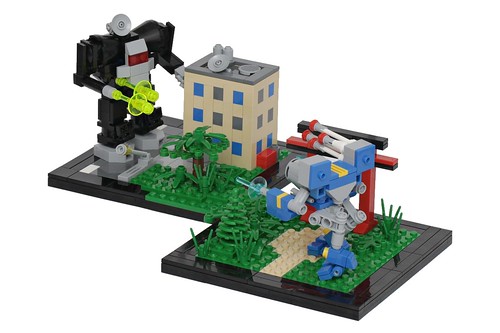
Secret Police and Colored Dragons
Даешь перевыполнить план по выпуску вехикулярных огнеметов в отчетном 3145 году!
-

DeJaVu - Администрация btbooks.ru
- Сообщения: 3472
- Зарегистрирован: 17 июл 2009, 17:41
- Благодарил (а): 154 раз.
- Поблагодарили: 1237 раз.
Re: [Анонсы]Handbook: House Kurita
Самый долгоожидаемый книг после Клондайка)
For a variety of reasons this is a book that has been a long, long time in coming…it’s wonderful to see the art flowing in fast and furious as we get close to sending this to print.
Here’s two pieces…will share more on future days…
Даешь перевыполнить план по выпуску вехикулярных огнеметов в отчетном 3145 году!
-

DeJaVu - Администрация btbooks.ru
- Сообщения: 3472
- Зарегистрирован: 17 июл 2009, 17:41
- Благодарил (а): 154 раз.
- Поблагодарили: 1237 раз.
Re: [Анонсы]Handbook: House Kurita
Судя по картинкам, книга будет шикарная. Но почему пехотинцы рядом с "Пантерой" напоминают мне Петруху и и Саида из небезызвестного фильма?)))
Jack, you have debauched my sloth!
-

acefalcon - Академик
- Сообщения: 6392
- Зарегистрирован: 25 янв 2011, 12:26
- Откуда: Желтогорск
- Благодарил (а): 1691 раз.
- Поблагодарили: 3249 раз.
- Награды: 6
-





-

Re: [Анонсы]Handbook: House Kurita
The Deadly Double Cobra
так вот,что погубило федералов, куритян и космическую звезду воронов ...
Лютасцю больш небяспечны, чым люты драпежнік,
Зубр для людзей не страшны, не чапай — не зачэпіць,
Будзе стаяць як укопаны — пастыр на варце,
Не страпянецца, а позіркам пасціць няспынна
I чараду, і сям'ю ў чарадзе на папасе
Зубр для людзей не страшны, не чапай — не зачэпіць,
Будзе стаяць як укопаны — пастыр на варце,
Не страпянецца, а позіркам пасціць няспынна
I чараду, і сям'ю ў чарадзе на папасе
-

KolbunD - Лучший Фанфикописатель 2009, 2011
- Сообщения: 4023
- Зарегистрирован: 15 дек 2008, 12:26
- Откуда: Минск
- Благодарил (а): 142 раз.
- Поблагодарили: 1110 раз.
- Награды: 4
-




Re: [Анонсы]Handbook: House Kurita
acefalcon писал(а): Но почему пехотинцы рядом с "Пантерой" напоминают мне Петруху и и Саида из небезызвестного фильма?)))
Может, рисовал поклонник этого фильма?
В бою многое решает удача. Так что намного лучше быть удачливым пилотом, чем умелым (безымянный инструктор Кая Алларда-Ляо).
-

Бойцовый кот - Читатель
- Сообщения: 266
- Зарегистрирован: 03 дек 2012, 14:27
- Откуда: Терра, Россия
- Благодарил (а): 195 раз.
- Поблагодарили: 143 раз.
Re: [Анонсы]Handbook: House Kurita
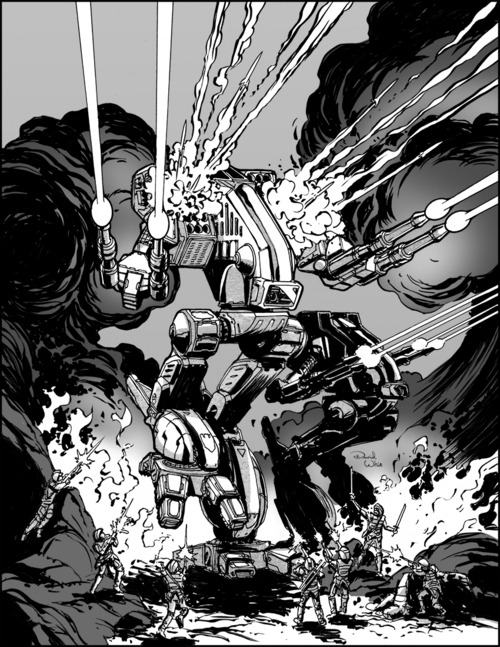
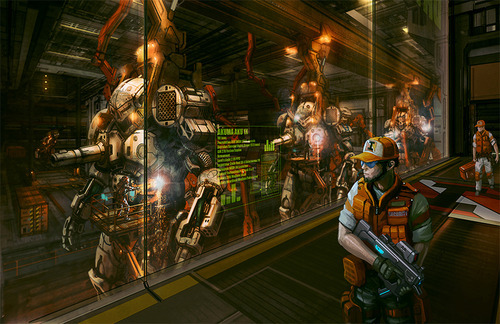
Даешь перевыполнить план по выпуску вехикулярных огнеметов в отчетном 3145 году!
-

DeJaVu - Администрация btbooks.ru
- Сообщения: 3472
- Зарегистрирован: 17 июл 2009, 17:41
- Благодарил (а): 154 раз.
- Поблагодарили: 1237 раз.
Re: [Анонсы]Handbook: House Kurita
Немного арта
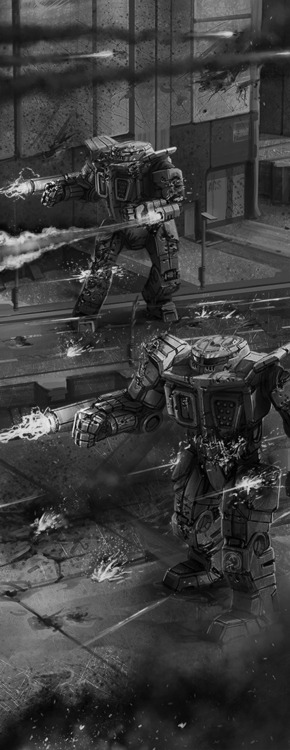
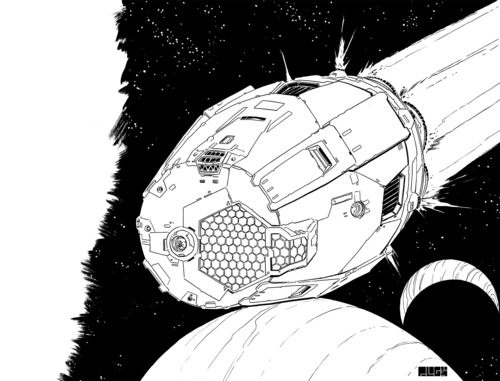
И целый ББ
Devotion to duty, perfected through greater self-discipline, leads to an improved state of personal freedom and sense of joy focused on fulfillment in one’s work.
[Commentary: Business is war on the field of numbers. Financial ruin from poor decisions and improper decorum is as deadly as badly considered tactics and unconsidered strategies. In the great machine, one faulty gear can create a catastrophe; one poorly maintained part could destroy a company. It is the duty of the worker to give all he is to the success of his endeavor. For the smallest part plays the largest role in the success or failure of the greater purpose.]
—Dictum Honorium VII, 215–216
Too many years in the making, the advent of Handbook: House Kurita is nearly upon us. The last of the critically acclaimed—but low-selling—Handbook series, it marks the end of the 3067 “era” and provides a comprehensive view of one of the BattleTech universe’s most misunderstood and maligned factions. Grossly sketched as the “evil empire” early on in the game’s creation, the Draconis Combine has turned into one of the most dynamic and culturally rich realms in the current setting. This particular stellar empire survives on the sheer force of will of its ruling House, the Kurita clan. As the family went, so did the Combine.
Anyway, one of the earliest sections I’d completed back in 2011 was the chapter describing the Pillar of Jade—the economic structure of the realm. One of the key pieces within this chapter are the corporate sketches of the Combine’s industrial might. For the Combine, industry is divided along two lines—those that support the military, and everything else. The Draconis Combine’s reliance on the military is a major cornerstone of its existence and key to its continued survival.

Also important in this particular section is a look at the Combine’s economy (specifically, how it is based almost entirely on the success and failure of its military tradition), monetary system, corporate structure, trade, and business perspective. All of these aspects are critical to understanding why the Pillar of Jade is such an important cornerstone to the Combine’s success despite its restrictions, especially compared the (relatively) free markets of the Lyran Commonwealth and Federated Suns—House Kurita’s chief rivals in the struggle to become First Lord of the original Star League.
One of the more difficult aspects of writing this book was making sure that information and secrets later divulged in the fires of the Jihad are not revealed. Sometimes, this meant some form of obfuscation or, in a couple of cases, outright “lies,” that are couched in the perspective of the book’s narrative voice. If the reader looks closely at various areas, especially those touched by story elements in the later Jihad plot books, then the foundation of those arcs can be seen.
But like all things Kuritan, truth is often outed through the perspective of the beholder—after much contemplation, of course.
Enjoy these two corporate previews from the Pillar of Jade.
~Ben H. Rome
BattleTech Assistant Line Developer
Midway Shipyards
Main Headquarters: Orbital (Midway)
CEO: Lawrence Maas
Main Products (Midway; Midway Shipyards): Inazuma-class, Kirishima-class, and Kyushu-class WarShips
Main Products (Schuyler; Dharma HyperSpace) Scout-class JumpShip
Profile: Considered the Combine’s experts in WarShip construction, Midway Shipyards began originally as a JumpShip manufacturer. Its first slips, still in orbit around the planet Midway, produced Star Lord- and Invader-class vessels for the Dragon. Midway-built JumpShips were known for their solid construction and had fewer breakdowns and repair issues than other similar class vessels.
Midway was given the DCA’s contracts for the Inazuma-, Kirishima-, and Kyushu-class WarShips based on their exemplary record. The contracts included a massive series of grants to increase the Midway yards, tripling the company’s size in less than four years. Midway’s increase in fortune has trickled down to the planet proper, providing a level of comfort and satisfaction rarely found among other corporations of the same size.
The shipyards produce an average of one to three JumpShips a year as resources are reallocated to the WarShip program.

Isesaki ShippingIndustry
Headquarters: Ukonsoi (Isesaki)
CEO: Daimyo Ernest Machida
Main Products: Interstellar shipping, small craft, cargo modules, Roku Royal land train, Tramp-class JumpShips
Profile: Isesaki Shipping dates back over five centuries. Though the firm has undergone changes and restructuring over time, Isesaki holds a royal patent to trade anywhere in the Inner Sphere. Turbulent relations between the Combine and its neighbors have sometimes made these operations difficult, but Isesaki’s agents and extensive contacts with “independent” traders have always allowed the company to find a way to its goals.
Rumors among Imperial courtiers typically place Isesaki’s free-rein mandate in league with ISF operations beyond the Combine border. While no evidence has ever surfaced that the transport company is simply an extension of the security force, the ISF has been known to place agents on more far-reaching routes.
In addition to its primary business concern of interstellar shipping, Isesaki has branched into other related products and services. The company is the primary domestic shipping provider on the bulk of the Combine’s planets. Isesaki’s manufacturing arm produces several types of all-purpose cargo modules, the popular Roku Royal land train, and a handful of Tramp-class JumpShips every few years. These vessels are built directly for the company; retired JumpShips are often sold at auction to independent buyers and some small shipping concerns.
Currently, the company is wrapping up construction on its new orbital manufacturing facilities over Luthien. The interlinked stations are slated to produce Isesaki’s new Roku Royal II tracked land train.


И целый ББ
Devotion to duty, perfected through greater self-discipline, leads to an improved state of personal freedom and sense of joy focused on fulfillment in one’s work.
[Commentary: Business is war on the field of numbers. Financial ruin from poor decisions and improper decorum is as deadly as badly considered tactics and unconsidered strategies. In the great machine, one faulty gear can create a catastrophe; one poorly maintained part could destroy a company. It is the duty of the worker to give all he is to the success of his endeavor. For the smallest part plays the largest role in the success or failure of the greater purpose.]
—Dictum Honorium VII, 215–216
Too many years in the making, the advent of Handbook: House Kurita is nearly upon us. The last of the critically acclaimed—but low-selling—Handbook series, it marks the end of the 3067 “era” and provides a comprehensive view of one of the BattleTech universe’s most misunderstood and maligned factions. Grossly sketched as the “evil empire” early on in the game’s creation, the Draconis Combine has turned into one of the most dynamic and culturally rich realms in the current setting. This particular stellar empire survives on the sheer force of will of its ruling House, the Kurita clan. As the family went, so did the Combine.
Anyway, one of the earliest sections I’d completed back in 2011 was the chapter describing the Pillar of Jade—the economic structure of the realm. One of the key pieces within this chapter are the corporate sketches of the Combine’s industrial might. For the Combine, industry is divided along two lines—those that support the military, and everything else. The Draconis Combine’s reliance on the military is a major cornerstone of its existence and key to its continued survival.

Also important in this particular section is a look at the Combine’s economy (specifically, how it is based almost entirely on the success and failure of its military tradition), monetary system, corporate structure, trade, and business perspective. All of these aspects are critical to understanding why the Pillar of Jade is such an important cornerstone to the Combine’s success despite its restrictions, especially compared the (relatively) free markets of the Lyran Commonwealth and Federated Suns—House Kurita’s chief rivals in the struggle to become First Lord of the original Star League.
One of the more difficult aspects of writing this book was making sure that information and secrets later divulged in the fires of the Jihad are not revealed. Sometimes, this meant some form of obfuscation or, in a couple of cases, outright “lies,” that are couched in the perspective of the book’s narrative voice. If the reader looks closely at various areas, especially those touched by story elements in the later Jihad plot books, then the foundation of those arcs can be seen.
But like all things Kuritan, truth is often outed through the perspective of the beholder—after much contemplation, of course.
Enjoy these two corporate previews from the Pillar of Jade.
~Ben H. Rome
BattleTech Assistant Line Developer
Midway Shipyards
Main Headquarters: Orbital (Midway)
CEO: Lawrence Maas
Main Products (Midway; Midway Shipyards): Inazuma-class, Kirishima-class, and Kyushu-class WarShips
Main Products (Schuyler; Dharma HyperSpace) Scout-class JumpShip
Profile: Considered the Combine’s experts in WarShip construction, Midway Shipyards began originally as a JumpShip manufacturer. Its first slips, still in orbit around the planet Midway, produced Star Lord- and Invader-class vessels for the Dragon. Midway-built JumpShips were known for their solid construction and had fewer breakdowns and repair issues than other similar class vessels.
Midway was given the DCA’s contracts for the Inazuma-, Kirishima-, and Kyushu-class WarShips based on their exemplary record. The contracts included a massive series of grants to increase the Midway yards, tripling the company’s size in less than four years. Midway’s increase in fortune has trickled down to the planet proper, providing a level of comfort and satisfaction rarely found among other corporations of the same size.
The shipyards produce an average of one to three JumpShips a year as resources are reallocated to the WarShip program.

Isesaki ShippingIndustry
Headquarters: Ukonsoi (Isesaki)
CEO: Daimyo Ernest Machida
Main Products: Interstellar shipping, small craft, cargo modules, Roku Royal land train, Tramp-class JumpShips
Profile: Isesaki Shipping dates back over five centuries. Though the firm has undergone changes and restructuring over time, Isesaki holds a royal patent to trade anywhere in the Inner Sphere. Turbulent relations between the Combine and its neighbors have sometimes made these operations difficult, but Isesaki’s agents and extensive contacts with “independent” traders have always allowed the company to find a way to its goals.
Rumors among Imperial courtiers typically place Isesaki’s free-rein mandate in league with ISF operations beyond the Combine border. While no evidence has ever surfaced that the transport company is simply an extension of the security force, the ISF has been known to place agents on more far-reaching routes.
In addition to its primary business concern of interstellar shipping, Isesaki has branched into other related products and services. The company is the primary domestic shipping provider on the bulk of the Combine’s planets. Isesaki’s manufacturing arm produces several types of all-purpose cargo modules, the popular Roku Royal land train, and a handful of Tramp-class JumpShips every few years. These vessels are built directly for the company; retired JumpShips are often sold at auction to independent buyers and some small shipping concerns.
Currently, the company is wrapping up construction on its new orbital manufacturing facilities over Luthien. The interlinked stations are slated to produce Isesaki’s new Roku Royal II tracked land train.
Даешь перевыполнить план по выпуску вехикулярных огнеметов в отчетном 3145 году!
-

DeJaVu - Администрация btbooks.ru
- Сообщения: 3472
- Зарегистрирован: 17 июл 2009, 17:41
- Благодарил (а): 154 раз.
- Поблагодарили: 1237 раз.
Re: [Анонсы]Handbook: House Kurita
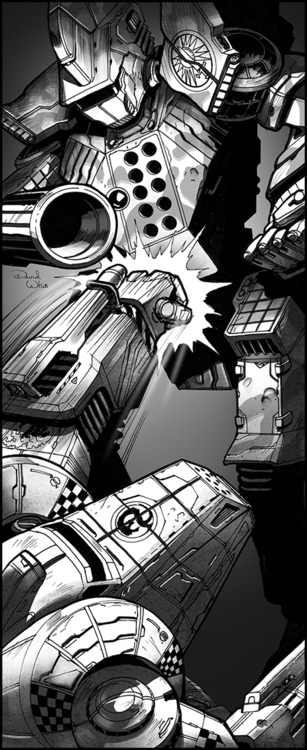
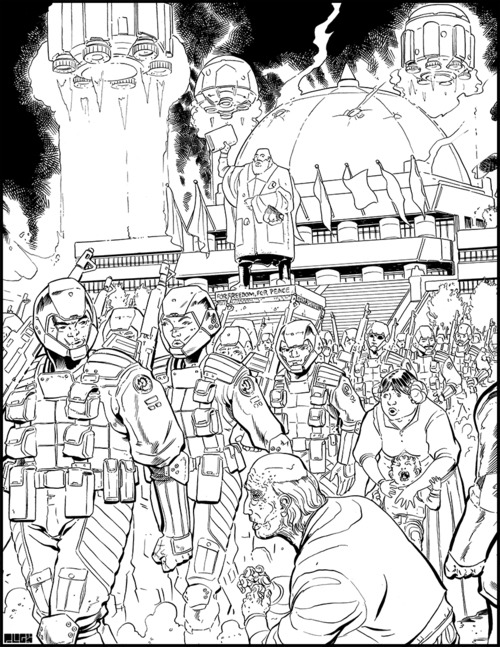
Даешь перевыполнить план по выпуску вехикулярных огнеметов в отчетном 3145 году!
-

DeJaVu - Администрация btbooks.ru
- Сообщения: 3472
- Зарегистрирован: 17 июл 2009, 17:41
- Благодарил (а): 154 раз.
- Поблагодарили: 1237 раз.
Re: [Анонсы]Handbook: House Kurita
Reflecting the Pillar of Gold

One of the more interesting sections to write with Handbook: House Kurita was that of the Pillar of Gold, or the Government arm of the Dragon. It encompasses the politics, policy, nobility, court, and of course, the ever-present Combine bureaucracy. It’s a lot of seemingly disparate parts that form the whole of the Great House’s leadership. An archaic blend of old rituals and new ideologies, the Kuritan government prides itself on the steel grasp of the past while warily looking to the future.
Divorcing myself from the events of the Jihad, at which we were wrapping up at the time of writing this chapter, was a little difficult, as I knew what was already in store for this venerable House. But it was also a playground chapter to lay several ‘seeds’ for the Jihad arc, and possibly putting a little spin on what was already known to readers of that Era.
The most challenging, however, was including the Combine’s rather interesting relationship with Clan Nova Cat. What foundations were put in place here would have ripples and ramifications far past the Jihad Era and stretch well towards the Dark Age. Even though the sections dealing with the Clan are small, I put a lot of research under my belt before writing it. I saw the relationship between the two powers as something very similar to my own ancestral history, so it proved especially poignant to write. To see a people and culture penned into place, pressed on all sides to assimilate and conform, yet nobly refusing despite the intolerance arrayed against them, was somewhat of a challenge to do without getting emotionally attached. I will say that after reading these parts, some scattered in other relevant sections, the death of the Nova Cats later in the fictional history of this universe makes a much more emotional statement.
And to think, this is but one of the many complex facets that make up this glorious, yet sadly troubled, Great House. I hope I have done it justice.
From the Pillar of Gold section:
The Nova Cat Penned
It has been less than a decade since my people have been placed within these “reservation zones.” I am not like my fellow Clansmen: I do not believe we share a spiritual heritage with these Kuritans or that they have any desire to embrace us as kinsmen. We are, at best, tolerated by our wardens—and a sop when the Ghost Bears come raging across the border again.
Our enclaves feel more like prison barracks than refugee enclaves. In most cases, we were thrust into harsh terrain among the open areas of worlds within our Irece Prefecture. In some instances, such as ready-made industrial zones, Kuritan civilians were removed and as such despise us for taking their homes. View a Nova Cat enclave alongside a Kuritan city and the differences are obvious. Armed security watches our every move. Suspicious eyes avoid our gaze. Kuritan police and ISF bureaucrats demanding to see identification at any time. All this, despite the claim by the Combine that the Clan has nearly autonomous control over the prefecture.
While the Combine’s society is very similar to our own, it is not compatible. With so much of our lower castes ravaged from our flight, we are heavily dependent on the Kuritan civilian to provide us with infrastructure, support, labor, and a multitude of other services that we, as Clansmen, have taken for granted. Our situation has laid bare our predicament and possibly sown the seeds for our destruction.
The warriors do not see the plight of their lower castes.
Those who were Clansmen were transported to these enclaves and distributed among the systems of Irece Prefecture. Many, many more of our “caste” were suborned Combine citizens, most of whom were happy to remove the yoke of “Clan oppression” from their shoulders. Because so few of our people escaped from the Homeworlds, citizens of the Combine surround our Clan. Citizens who well remember the oppression and abuse of the Clans not so long ago. To them, it does not matter who their captors were. Nova Cat, Smoke Jaguar, Ghost Bear—we are all still “the Clans” to them. And as such, worthy only of their scorn, hatred, and derision.
Indeed, the only Combine citizens who seem genuinely happy we are here are the nobles. Why not? Clan governance is different from the harsher extremes of the Combine. To them, we are downright lenient in our dispensation, which is an advantageous situation to them.
Our warriors ignore this. They do not see the difficulties placed upon our lower caste brothers and sisters. High prices for common goods. “Missing” shipments. Outright refusal of service. Mockery. Even if the Dragon’s citizenry is polite, you can simply look into their eyes and see their mistrust, their anger, their disgust.
Therefore, we stay within our designated zones, among our own people. We avoid the confusion, the culture clashes, the misunderstandings that might lead to beatings or incarceration. We find protection behind the shield of being Clan. It saddens me that these downtrodden citizens cannot see beyond their xenophobia and paranoia to all the good the Clan brings to their lives. Better technology. Higher standard of living. An open and honorable way of governance not dissimilar to their own. And most importantly, we respect and observe the rule of the Coordinator, to whom we owe our very existence.
As I understand it, this is not what the Coordinator wanted when he first proposed this arrangement with our exalted khans. However, it has become our reality. With corporate agents, ministry officials, and military officers carrying out the “will of the Coordinator,” using and abusing us for our technology and treating us worse than the Combine’s own Unproductives, we have no reason to believe the Coordinator has our best interest in mind. It is as if the Dragon did not wish to waste further resources on destroying another Clan, opting instead to let us wither on the vine. The addition of the Coordinator’s freeborn son into our ranks is an insult to the Way of the Clan. Our warriors may think it is an honor, but we of the lower castes know the truth: he is simply another weapon to kill our culture.
Our situation deteriorates. Only our Clan’s honor props us up. And I fear our warriors will soon kick that prop out from under us. We will wither and die, ground under the heavy bulk of the Dragon’s scales until we are but dust.
—Personal Notations, 041667; Technician Factor Jarvis Novacat
Until next time,
Ben H. Rome
Assistant Line Developer

One of the more interesting sections to write with Handbook: House Kurita was that of the Pillar of Gold, or the Government arm of the Dragon. It encompasses the politics, policy, nobility, court, and of course, the ever-present Combine bureaucracy. It’s a lot of seemingly disparate parts that form the whole of the Great House’s leadership. An archaic blend of old rituals and new ideologies, the Kuritan government prides itself on the steel grasp of the past while warily looking to the future.
Divorcing myself from the events of the Jihad, at which we were wrapping up at the time of writing this chapter, was a little difficult, as I knew what was already in store for this venerable House. But it was also a playground chapter to lay several ‘seeds’ for the Jihad arc, and possibly putting a little spin on what was already known to readers of that Era.
The most challenging, however, was including the Combine’s rather interesting relationship with Clan Nova Cat. What foundations were put in place here would have ripples and ramifications far past the Jihad Era and stretch well towards the Dark Age. Even though the sections dealing with the Clan are small, I put a lot of research under my belt before writing it. I saw the relationship between the two powers as something very similar to my own ancestral history, so it proved especially poignant to write. To see a people and culture penned into place, pressed on all sides to assimilate and conform, yet nobly refusing despite the intolerance arrayed against them, was somewhat of a challenge to do without getting emotionally attached. I will say that after reading these parts, some scattered in other relevant sections, the death of the Nova Cats later in the fictional history of this universe makes a much more emotional statement.
And to think, this is but one of the many complex facets that make up this glorious, yet sadly troubled, Great House. I hope I have done it justice.
From the Pillar of Gold section:
The Nova Cat Penned
It has been less than a decade since my people have been placed within these “reservation zones.” I am not like my fellow Clansmen: I do not believe we share a spiritual heritage with these Kuritans or that they have any desire to embrace us as kinsmen. We are, at best, tolerated by our wardens—and a sop when the Ghost Bears come raging across the border again.
Our enclaves feel more like prison barracks than refugee enclaves. In most cases, we were thrust into harsh terrain among the open areas of worlds within our Irece Prefecture. In some instances, such as ready-made industrial zones, Kuritan civilians were removed and as such despise us for taking their homes. View a Nova Cat enclave alongside a Kuritan city and the differences are obvious. Armed security watches our every move. Suspicious eyes avoid our gaze. Kuritan police and ISF bureaucrats demanding to see identification at any time. All this, despite the claim by the Combine that the Clan has nearly autonomous control over the prefecture.
While the Combine’s society is very similar to our own, it is not compatible. With so much of our lower castes ravaged from our flight, we are heavily dependent on the Kuritan civilian to provide us with infrastructure, support, labor, and a multitude of other services that we, as Clansmen, have taken for granted. Our situation has laid bare our predicament and possibly sown the seeds for our destruction.
The warriors do not see the plight of their lower castes.
Those who were Clansmen were transported to these enclaves and distributed among the systems of Irece Prefecture. Many, many more of our “caste” were suborned Combine citizens, most of whom were happy to remove the yoke of “Clan oppression” from their shoulders. Because so few of our people escaped from the Homeworlds, citizens of the Combine surround our Clan. Citizens who well remember the oppression and abuse of the Clans not so long ago. To them, it does not matter who their captors were. Nova Cat, Smoke Jaguar, Ghost Bear—we are all still “the Clans” to them. And as such, worthy only of their scorn, hatred, and derision.
Indeed, the only Combine citizens who seem genuinely happy we are here are the nobles. Why not? Clan governance is different from the harsher extremes of the Combine. To them, we are downright lenient in our dispensation, which is an advantageous situation to them.
Our warriors ignore this. They do not see the difficulties placed upon our lower caste brothers and sisters. High prices for common goods. “Missing” shipments. Outright refusal of service. Mockery. Even if the Dragon’s citizenry is polite, you can simply look into their eyes and see their mistrust, their anger, their disgust.
Therefore, we stay within our designated zones, among our own people. We avoid the confusion, the culture clashes, the misunderstandings that might lead to beatings or incarceration. We find protection behind the shield of being Clan. It saddens me that these downtrodden citizens cannot see beyond their xenophobia and paranoia to all the good the Clan brings to their lives. Better technology. Higher standard of living. An open and honorable way of governance not dissimilar to their own. And most importantly, we respect and observe the rule of the Coordinator, to whom we owe our very existence.
As I understand it, this is not what the Coordinator wanted when he first proposed this arrangement with our exalted khans. However, it has become our reality. With corporate agents, ministry officials, and military officers carrying out the “will of the Coordinator,” using and abusing us for our technology and treating us worse than the Combine’s own Unproductives, we have no reason to believe the Coordinator has our best interest in mind. It is as if the Dragon did not wish to waste further resources on destroying another Clan, opting instead to let us wither on the vine. The addition of the Coordinator’s freeborn son into our ranks is an insult to the Way of the Clan. Our warriors may think it is an honor, but we of the lower castes know the truth: he is simply another weapon to kill our culture.
Our situation deteriorates. Only our Clan’s honor props us up. And I fear our warriors will soon kick that prop out from under us. We will wither and die, ground under the heavy bulk of the Dragon’s scales until we are but dust.
—Personal Notations, 041667; Technician Factor Jarvis Novacat
Until next time,
Ben H. Rome
Assistant Line Developer
Даешь перевыполнить план по выпуску вехикулярных огнеметов в отчетном 3145 году!
-

DeJaVu - Администрация btbooks.ru
- Сообщения: 3472
- Зарегистрирован: 17 июл 2009, 17:41
- Благодарил (а): 154 раз.
- Поблагодарили: 1237 раз.
Re: [Анонсы]Handbook: House Kurita
Absolutely giddy to see this long-await sourcebook nearing completion. Thinking 2015 is gonna be a great year for getting several long-ancitipated books out the door!



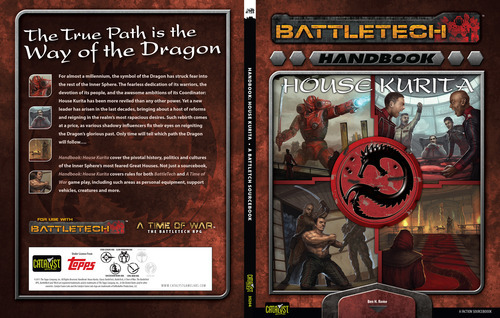
Даешь перевыполнить план по выпуску вехикулярных огнеметов в отчетном 3145 году!
-

DeJaVu - Администрация btbooks.ru
- Сообщения: 3472
- Зарегистрирован: 17 июл 2009, 17:41
- Благодарил (а): 154 раз.
- Поблагодарили: 1237 раз.
Re: [Анонсы]Handbook: House Kurita
The essence of religion is faith, a belief strictly independent of intellectual comprehension. Your religion, then, provides a complete ideological apparatus that is devoid of content. The content must come from elsewhere, from the reality of man’s interaction with the material universe. And because the state is the means mankind uses to mediate this interaction, the content of religion in every era must reflect the ideological requirements of the state that rules in that era and the leading class that controls that state.
—Analects and Commentaries of the Fifth Era; Sacred Works (O5P), 2817

Women and Titles
Through centuries of continued veneration of males and the subservience of females, titles and other practices use the male pronoun or imply the male gender. Even as these attitudes are slowly changing, centuries of tradition preclude any instant change of title structure. As such, though a planetary chairman may be a woman, she is still referred to as “chairman.”
—Kurita Etiquette Primer, Appendix A-2; Benjamin District Press, 3061
Non-Japanese Culture in the Draconis Combine
Although the general Kurita culture is closely based on that of Terran Japan, the majority of Combine citizens are not of Japanese ancestry. Especially on planets where one non-Japanese people predominates, there are definite strands of other cultures discernible.
The official Kurita tolerance for “foreign” cultures varies. At this time, under Jasmine Kurita’s advocacy of the arts, multicultural study and display is actually encouraged. The School of Cultural Investigation on Al Na’ir is dedicated to exploration of the different cultures “from which we took the best elements, to forge together the superior way of living known as Kurita culture,” according to Dean Hamin Gemal. Students of cultural investigation apply history, geography, anthropology, sociology, art history, and other disciplines to discover the hidden heritage of the non-Japanese Draconis Combine. The school even formed a task force in 3064, sending several instructors and researchers to observe and live in the Clan Nova Cat reserve areas.
While most cultural aspects—education, class structure, titles, and modes of address, for example—display the mainline Japanese-influenced culture of Kurita, arts and crafts on different planets still reflect the individual spirit and local cultural influences. For example, the architecture of the School of Cultural Investigation shows distinct references to the building style of the Terran Middle East and northern Africa.
Artists studying at Cultural Investigation, or influenced by its philosophy, follow their interests in one of two ways: reproducing the artistic forms of past times or adapting these forms to the present. Examples of the first include Philip Valenzuela’s translations of ancient Spanish authors—such as Marquez, Neruda, and Borges—and Marion Tsevernasky’s popular renditions of Russian, Ukrainian, and Martian folk music.
Examples of the adaptive school rank among the most exciting artistic work being done in the Combine today. The broad, cliff paintings of Bruno O’Leary are directly influenced by the Renaissance works of Monet, da Vinci, and Renoir. The neon kabuki performances by Isolde Gunnedottir reflect the mid-twenty-second-century, three-dimensional operatics of Jurgid and Tommes. Michi Kirosawa’s extremely popular trivid action cinema are directly influenced by the ancient monster telefilms of the Shōwa period.
The only major gap in the wave of interest in other cultures is that of the Azami people. Because of their unique status as allies of the Dragon rather than subjects, they are often viewed with a veil of mistrust. Some inroads have been made in trying to understand and elevate the Azami culture—especially to Kurita enclaves on Azami worlds and neighboring systems—but their own reluctance to open up their closed culture to outsiders has hampered efforts. The epic Sands of Fire, a harrowing tale of the Azami wildegort herders who helped the DCMS defend against a Davion raid on Dabih, is one of few current exceptions. Director Mohammed Lakhdar’s Second Succession War-era biopic has met critical success on several worlds, including Luthien and New Samarkand.
In the xenophobic atmosphere of House Kurita, the only way to sell the studies of other cultures is by stressing the superior way of the Combine and the benefits of incorporating the best of other cultures. It is likely that if Kurita suffers a major setback either internally or on the battlefronts, these foreign elements will be banned. Those studying these cultures know they are taking a great risk and, more than most, truly suffer for their art.
—The Struggle of Culture Amongst the Dragon’s Stars; Proserpina Press, 3066
Ben H. Rome
Assistant Line Developer
—Analects and Commentaries of the Fifth Era; Sacred Works (O5P), 2817

Women and Titles
Through centuries of continued veneration of males and the subservience of females, titles and other practices use the male pronoun or imply the male gender. Even as these attitudes are slowly changing, centuries of tradition preclude any instant change of title structure. As such, though a planetary chairman may be a woman, she is still referred to as “chairman.”
—Kurita Etiquette Primer, Appendix A-2; Benjamin District Press, 3061
Non-Japanese Culture in the Draconis Combine
Although the general Kurita culture is closely based on that of Terran Japan, the majority of Combine citizens are not of Japanese ancestry. Especially on planets where one non-Japanese people predominates, there are definite strands of other cultures discernible.
The official Kurita tolerance for “foreign” cultures varies. At this time, under Jasmine Kurita’s advocacy of the arts, multicultural study and display is actually encouraged. The School of Cultural Investigation on Al Na’ir is dedicated to exploration of the different cultures “from which we took the best elements, to forge together the superior way of living known as Kurita culture,” according to Dean Hamin Gemal. Students of cultural investigation apply history, geography, anthropology, sociology, art history, and other disciplines to discover the hidden heritage of the non-Japanese Draconis Combine. The school even formed a task force in 3064, sending several instructors and researchers to observe and live in the Clan Nova Cat reserve areas.
While most cultural aspects—education, class structure, titles, and modes of address, for example—display the mainline Japanese-influenced culture of Kurita, arts and crafts on different planets still reflect the individual spirit and local cultural influences. For example, the architecture of the School of Cultural Investigation shows distinct references to the building style of the Terran Middle East and northern Africa.
Artists studying at Cultural Investigation, or influenced by its philosophy, follow their interests in one of two ways: reproducing the artistic forms of past times or adapting these forms to the present. Examples of the first include Philip Valenzuela’s translations of ancient Spanish authors—such as Marquez, Neruda, and Borges—and Marion Tsevernasky’s popular renditions of Russian, Ukrainian, and Martian folk music.
Examples of the adaptive school rank among the most exciting artistic work being done in the Combine today. The broad, cliff paintings of Bruno O’Leary are directly influenced by the Renaissance works of Monet, da Vinci, and Renoir. The neon kabuki performances by Isolde Gunnedottir reflect the mid-twenty-second-century, three-dimensional operatics of Jurgid and Tommes. Michi Kirosawa’s extremely popular trivid action cinema are directly influenced by the ancient monster telefilms of the Shōwa period.
The only major gap in the wave of interest in other cultures is that of the Azami people. Because of their unique status as allies of the Dragon rather than subjects, they are often viewed with a veil of mistrust. Some inroads have been made in trying to understand and elevate the Azami culture—especially to Kurita enclaves on Azami worlds and neighboring systems—but their own reluctance to open up their closed culture to outsiders has hampered efforts. The epic Sands of Fire, a harrowing tale of the Azami wildegort herders who helped the DCMS defend against a Davion raid on Dabih, is one of few current exceptions. Director Mohammed Lakhdar’s Second Succession War-era biopic has met critical success on several worlds, including Luthien and New Samarkand.
In the xenophobic atmosphere of House Kurita, the only way to sell the studies of other cultures is by stressing the superior way of the Combine and the benefits of incorporating the best of other cultures. It is likely that if Kurita suffers a major setback either internally or on the battlefronts, these foreign elements will be banned. Those studying these cultures know they are taking a great risk and, more than most, truly suffer for their art.
—The Struggle of Culture Amongst the Dragon’s Stars; Proserpina Press, 3066
Ben H. Rome
Assistant Line Developer
Homo Homini Lupus Est.
-

rcw_hardcore - Читатель
- Сообщения: 196
- Зарегистрирован: 29 апр 2013, 20:41
- Откуда: Москва
- Благодарил (а): 36 раз.
- Поблагодарили: 40 раз.
Re: [Анонсы]Handbook: House Kurita
Разъяснение сложившейся ситуации ("этот проект получился слегка проклят, но все будет") и три страницы из книги: http://catalystgamelabs.tumblr.com/post ... ita-layout
Мы отрекаемся от ярлыков. Мы сражаемся за деньги и нечто неопределенное под названием "гордость". Политика, этика и мораль к делу не относятся.
Костоправ, летописец Черного Отряда.
Костоправ, летописец Черного Отряда.
-

Florean - Новичок
- Сообщения: 35
- Зарегистрирован: 27 окт 2011, 08:03
- Откуда: Одинцово, МО
- Благодарил (а): 13 раз.
- Поблагодарили: 15 раз.
Re: [Анонсы]Handbook: House Kurita
имхо, он вышел бы раньше, но господа укатили на пакс...
Даешь перевыполнить план по выпуску вехикулярных огнеметов в отчетном 3145 году!
-

DeJaVu - Администрация btbooks.ru
- Сообщения: 3472
- Зарегистрирован: 17 июл 2009, 17:41
- Благодарил (а): 154 раз.
- Поблагодарили: 1237 раз.
Сообщений: 40
• Страница 1 из 2 • 1, 2
Вернуться в Новости вселенной Battletech
Кто сейчас на конференции
Сейчас этот форум просматривают: нет зарегистрированных пользователей и гости: 30

